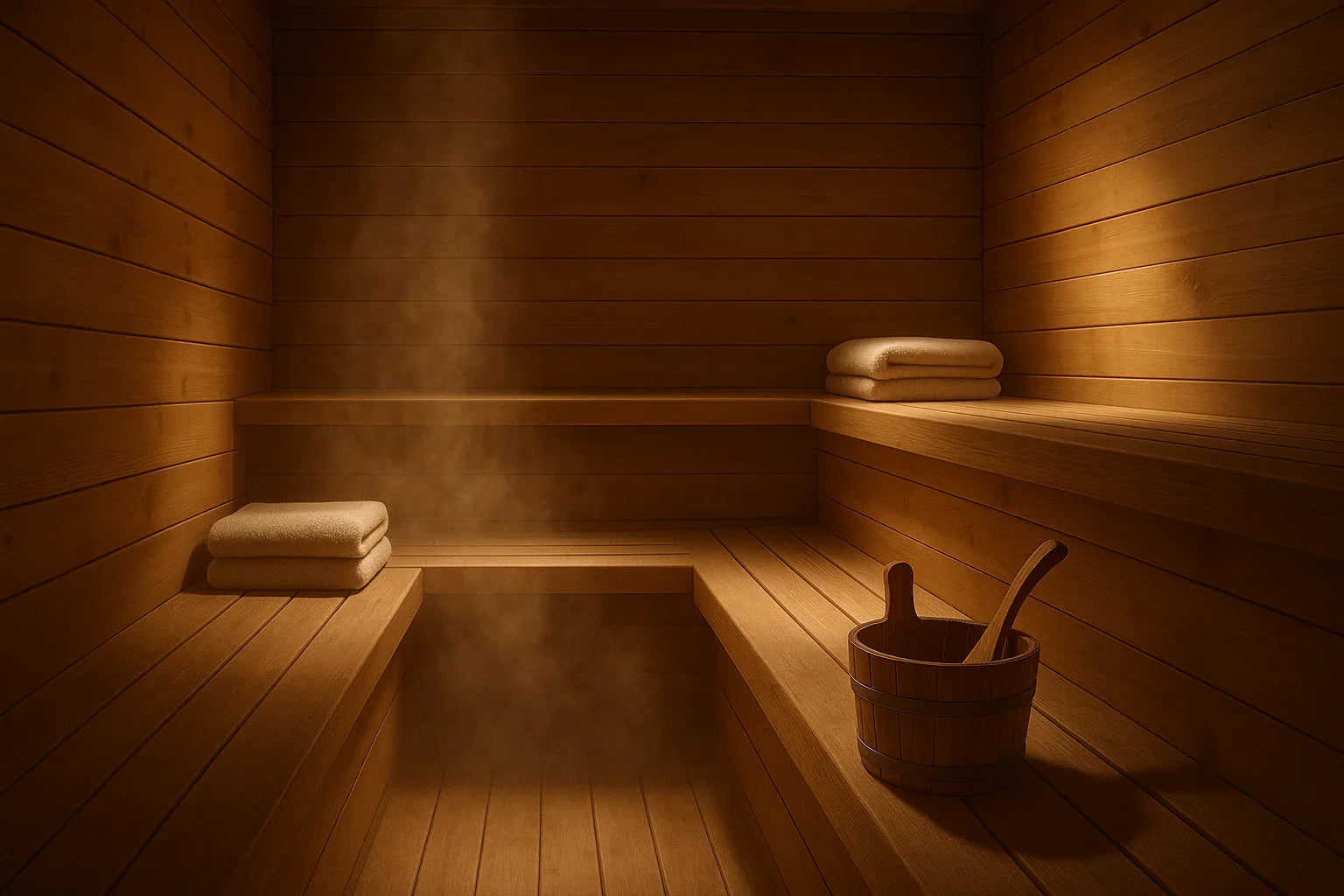
Sauna Therapy: A Guide to Relaxation and Wellness
Sauna Therapy: A Guide to Relaxation and Wellness
This beginner’s guide explains what a hot room is, how it affects the body, and the main health benefits you may notice.

For centuries, saunas have helped people relax, ease stress, and sleep better. Traditional Finnish units run very hot with low humidity, while infrared sauna models use lower temps and direct heat.
Heat raises heart rate and makes you sweat. A typical session can boost pulse to 100–150 bpm and cause about a pint of sweat in a short time. Long-term research from Finland shows links between frequent visits and lower risks of sudden cardiac death and heart-related mortality.
Safety matters: avoid alcohol, hydrate well, and limit time—beginners start at 5–10 minutes; most people stay 15–20. Talk to a clinician if you have heart issues, are pregnant, elderly, or take certain medicines.
Key Takeaways
- Heat sessions support relaxation, sleep, and some cardiovascular markers.
- Know the difference: dry, infrared, and steam options feel and act differently.
- Finnish research links regular use to lower heart risks; more study on dementia is ongoing.
- Start short, hydrate, and watch for warning signs like dizziness.
- Consult a clinician if you have major health concerns before trying sessions.
What Is Sauna Therapy? A Beginner’s Definition and Why It’s Trending
A heated room session is a simple, time-efficient ritual that many people now use for relaxation and recovery.
At its core, sauna therapy means sitting in a small room built to deliver dry or moist heat. Traditional Finnish rooms run very hot—usually 158–212°F with low humidity. Infrared sauna models use lower air temperatures, roughly 110–135°F, and warm the body directly.
Exposure raises skin temperature and starts heavy sweating. Heart rate often climbs to 100–150 bpm, a response similar to light exercise. That quick cardiovascular signal helps explain why many users report calmer mood and better sleep.
https://www.youtube.com/watch?v=n8_7f-mu3uM
"A short, regular session can feel like a reset—efficient and easy to fit into daily life."
- Why it’s trending: home infrared options, gym access, and wellness interest.
- Beginner tips: start 5–10 minutes, work up to 15–20 as comfort allows.
- Keep perspective: promising benefits exist, but research and studies are ongoing.
| Type | Temperature | Humidity | Feel |
|---|---|---|---|
| Traditional dry | 158–212°F | 10–20% | Hot, intense |
| Infrared | 110–135°F | Low | Gentler, deeper warmth |
| Steam | Variable | High | Moist, heavy heat |
How Sauna Heat Affects Your Body: From Heart Rate to Sweat
Heat sends rapid signals through the nervous system that change how your whole body moves blood and cools itself.
Thermoregulation starts in the brain: temperature sensors signal the hypothalamus, which activates the HPA axis and begins hormonal responses. That cascade releases endorphins, heat shock proteins, cytokines, and myokines—molecules tied to mood and cell protection.

Why your pulse and circulation change
Warming the skin dilates peripheral blood vessels so blood moves toward the surface to shed heat. As a result, heart rate climbs—often into the 100–150 bpm range noted in many studies.
Heat vs. exercise
This shift mimics light-to-moderate exercise: circulation increases, but without heavy breathing or joint load. For many people, that means a mild cardiovascular workout that feels easier than a gym session.
- Humidity matters: high humidity limits sweat evaporation, raising perceived intensity and sometimes core temperature faster.
- Sweat loss: typical sessions can produce about a pint of sweat—so hydration is essential.
- Hydro-meiosis: wet heat or hot water immersion may raise core temperature and blood pressure more than dry heat because sweat evaporates less efficiently.
Pay attention to warning signs: pressure in the head, lightheadedness, or strong palpitations are cues to step out and cool down. Over time, regular use can produce heat adaptation—lower peak heart responses and more comfortable sessions.
Types of Saunas Explained: Dry, Infrared, and Steam
Not all heat rooms are the same—each type offers a unique experience and effect. Below we outline common options, how they feel, and practical differences to help you pick what fits your routine.

Traditional dry sauna (Finnish)
A classic dry sauna runs about 150–195°F with low humidity. Wood or electric heaters warm stones and the air, creating steady, intense dry heat.
Infrared sauna
Infrared sauna units use lower room temperatures (around 110–135°F) and warm the body more directly. Many beginners find this type gentler while still raising core temperature.
Steam rooms and hammam
These spaces use high humidity and mist. Because water limits evaporation, the heat can feel stronger and raise temperature faster. Pay attention to sweat and breathing comfort.
Contrast cycles
Heat, cold plunge, repeat is a common ritual in Finnish practice. Tossing water on stones gives a brief steam burst. Alternate with a cool rinse or plunge, but take care if you have blood pressure concerns.
| Type | Typical temp | Humidity | Feel |
|---|---|---|---|
| Traditional dry sauna | 150–195°F | Low (<20%) | Steady, intense dry heat |
| Infrared sauna | 110–135°F | Low | Deeper body warmth, gentler air |
| Steam room / hammam | Lower air temp | High | Moist, heavy heat; harder to cool |
Evidence-Backed Health Benefits You Can Expect
Regular, controlled heat sessions deliver several measurable benefits for circulation, sleep, and muscle comfort. Observational studies and small trials point to gains across multiple systems when people use these sessions sensibly and often.
Cardiovascular health: blood pressure and circulation
Long-term Finnish research followed 2,315 men for about 20 years and found frequent visits tied to much lower rates of sudden cardiac death and cardiovascular mortality.
Higher frequency—four to seven times weekly—showed the strongest links, with substantially reduced risk versus once weekly. Regular heat mimics light exercise for heart and blood flow and can lower blood pressure readings for many users.
Stress reduction and better sleep
Many people report calmer mood and deeper sleep after sessions. A drop in body temperature after leaving the heat helps the body enter sleep more easily.
Pain relief and muscle recovery
Short exposures can ease joint and muscle pain and speed recovery after workouts. Small studies suggest benefits for rheumatoid arthritis and some chronic pain conditions.
Lungs and skin
Moist environments often help mucus clearance in asthma or COPD, while dry heat can worsen atopic dermatitis for some. Psoriasis may improve in certain cases—watch your skin closely and adjust the type you use.
Cognition and long-term signals
Observational analyses suggest lower dementia and Alzheimer’s risks with frequent use, but research needed means we cannot claim cause and effect yet.
- Key takeaways: cardiovascular markers improve, stress and sleep often get better, and pain may ease.
- Infrared sauna approaches show promise for some people with chronic pain, chronic fatigue, and select heart conditions, but study quality varies.
- Always consider existing conditions and medications and consult a clinician for heart disease or complex health concerns.
| Benefit | Evidence strength | Who may benefit |
|---|---|---|
| Cardiovascular markers (BP, circulation) | Strong (cohort studies) | Adults with stable heart health |
| Stress reduction & sleep | Moderate (user reports + trials) | People with sleep or stress complaints |
| Pain and muscle recovery | Moderate (small trials) | Athletes, chronic pain sufferers |
| Skin and lungs | Variable (condition-specific) | Asthma, psoriasis (monitor response) |
Sauna Therapy Safety for Beginners: Who Should Be Cautious
Not everyone should jump into a hot-room routine—some health issues need a clinician's OK first. Start by checking risks and learning basic precautions for safe use.
Heart concerns and blood pressure
If you have heart disease, heart failure, severe aortic stenosis, or high or low blood pressure, make sure to consult a clinician before you increase session time or intensity. Rapid shifts from heat to cold can raise blood pressure and stress the heart.
Pregnancy, age, medications, and neurologic conditions
People who are pregnant, trying to conceive, under 16, or older than 65 should get personalized advice. Certain medications and neurologic conditions like epilepsy can change risk.
- Avoid alcohol before or during sessions; it raises the chance of dehydration, low blood pressure, arrhythmia, and impaired judgment.
- Start short: 5–10 minutes for beginners, build to 15–20 as you learn your temperature tolerance.
- Hydrate: drink water or an electrolyte beverage before and after to replace fluids lost by sweat.
- Stop if unwell: dizziness, nausea, breathlessness, or confusion are signs to leave and cool down.
- Contrast caution: hot-to-cold jumps can spike pressure—keep exposure brief or skip if sensitive.
- Infrared sauna may feel gentler due to lower air temperature, but follow the same time and safety rules.
Evidence supports safe use for most healthy people when guidelines are followed, but individualized advice helps if you have specific disease risks or complex conditions.
Starting Your First Sessions: Time, Temperature, and Hydration
Begin with short, gentle sessions so your body can learn to handle heat and sweat without stress. Keep early visits simple: aim for comfort, not endurance.

Beginner timing
Start with 5–10 minutes for your first few visits. Gradually build toward 15–20 minutes only if you feel comfortable.
Hydrate before and after
Make sure to drink water or an electrolyte beverage around each session. A short visit can cause about a pint of sweat, so replace fluids promptly.
Listen to your body
Stop immediately if you feel dizzy, weak, nauseous, or short of breath. These signs mean you should cool down and rest.
- Choose a temperature you can relax in; many beginners prefer the gentler feel of an infrared sauna.
- Sit or recline and breathe normally; avoid holding your breath or straining.
- Keep the first week to 2–3 sessions on nonconsecutive days and log how you feel.
"Short, steady practice helps people adapt while reducing risk."
Practical tip: bring a towel, plan a cool-down period, and avoid sudden hot-to-cold jumps if you have blood pressure sensitivity.
Sauna Use May Help Specific Groups
Targeted heat use can offer practical benefits for athletes and people with long-term conditions. Below we summarize who may gain and how to start safely.
Athletic recovery and heat acclimation
Many athletes add a short infrared sauna session after training to lower next-day soreness.
Regular, moderate exposure can speed heat acclimation. That adaptation helps in hot climates and during heat waves.
Chronic pain and chronic fatigue support
Reviews show people with chronic pain and chronic fatigue often report gentler relief from lower air temperatures.
Evidence is promising but limited, so research needed before firm protocols appear.
Perimenopause and hot flashes
Early reports say sessions may also reduce hot flash severity in some perimenopausal women. More studies are underway.
| Group | Likely benefit | Evidence | Practical tip |
|---|---|---|---|
| Athletes | Faster recovery, less soreness | Moderate (user reports) | Short post-exercise session; hydrate |
| Chronic pain/fatigue | Improved comfort, gentle circulation | Limited (small trials) | Start low temp, track response 24–48 hrs |
| Perimenopause | Fewer or milder hot flashes | Early signals; research needed | Work with clinician if heart or meds are concerns |
Common Myths vs. Facts: Weight Loss and “Detox” Claims
After a single heated session, weight on the scale often drops — but the reason is simple and temporary.
Weight changes are water loss, not fat loss. Sweating causes fluid loss; once you rehydrate, your weight returns to baseline. This is true even after vigorous or repeated visits.
Sweat is not a primary detox pathway. The liver, kidneys, and intestines do most toxin removal. Expect feeling cleaner or lighter, but not measurable toxin clearance via sweat alone.
Evidence reviews urge caution about broad claims. Research and studies show clear benefits for relaxation and circulatory markers, but not for melting fat or flushing toxins.
Quick facts
- If the scale dips after a session, it’s water loss; rehydrate to restore weight.
- Sauna use may help how you feel, but it should not replace diet, exercise, or medical care for disease.
- Avoid alcohol around heat: it raises dehydration, arrhythmia, and hypotension risk.
| Claim | Fact | What research says |
|---|---|---|
| Instant fat loss | Scale drops reflect water, not fat | Not supported by strong evidence |
| Major toxin elimination via sweat | Body clears toxins via liver/kidneys | Minimal role for sweat according to studies |
| Better recovery | May reduce soreness and improve sleep | Supported by moderate evidence |
Practical Tips for a Better Session
Simple prep and sensible choices can turn a good session into a great one. These tips focus on comfort, safety, and real-world habits people can use right away.
Dry heat vs. wet heat: Choosing what feels right
Decide between dry heat, infrared warmth, or wet heat based on how your body feels, not trends. Dry sauna rooms (150–195°F) have low humidity and may let you sit longer with steady sweating.
Humid spaces feel hotter fast because moisture limits evaporative cooling. Shorten sessions if intensity spikes.
Protect sensitive skin and areas
Protect lips and delicate skin with a beeswax lip balm or gentle ointment before you go in. A felt sauna hat helps keep your head comfortable and extend time without strain.
Bring a towel to sit on and rinse briefly between rounds to refresh skin. If your skin feels tight or prickly, step out and moisturize.
Avoid alcohol and sudden hot-to-cold jumps
Make sure you avoid alcohol before or during sessions. Alcohol raises dehydration risk, hypotension, and arrhythmia and dulls warning signs.
If you have blood pressure concerns, skip extreme hot-to-cold plunges. Rapid shifts can spike pressure; choose gradual cool-downs and monitor how your blood responds.
"Listen to your body: calm breathing, modest time, and steady hydration preserve benefit and reduce risk."
| Choice | Comfort | When to pick | Key tip |
|---|---|---|---|
| Dry sauna | Steady, intense | When you want shorter, hotter sessions | Hydrate and towel up |
| Infrared sauna | Gentler, lower temps | When you prefer milder warmth | Longer, lower-temp sessions |
| Wet/steam | Heavy, moist heat | When mucus clearance or humidity feels better | Keep sessions brief; watch breathing |
Sauna Therapy: A Simple Beginner Protocol
Begin with a modest plan that balances heat exposure, cool-down, and hydration. This helps your body adapt and keeps sessions pleasant.
Dry sauna option
Warm up briefly, then sit or recline for 10–15 minutes at a comfortable temperature. After the round, cool down with a lukewarm shower or room air and rehydrate.
Tip: Start with one round. Add a second short round only if you feel fresh. Track total time and how your body reacts.
Infrared option
Aim for 20–30 minutes at lower air temps in an infrared sauna. Focus on relaxed breathing and gentle stretching to help muscle recovery and circulation.
Keep water nearby and sip before and after; add electrolytes on longer or sweatier days.
Optional contrast
After a short heat round, try a quick cool rinse (10–30 seconds), rest for a minute, then repeat. Skip contrast if you have blood pressure concerns.
- Sit a moment before standing if you feel lightheaded to let blood flow adjust.
- Post-session, eat a small snack and drink fluids to replenish energy and water loss.
- For pain or muscle days, prefer an infrared session; for a quick energizing boost, try a brief dry round.
- Consistency beats intensity—2–4 enjoyable sessions per week often gives steady benefits.
"Start slow, track time and temperature, and let comfort guide progress."
Conclusion
, When used sensibly, regular heat exposure may support circulation and overall well‑being. Long-term observational studies link moderate, frequent visits to improved cardiovascular health and many people report less stress, better sleep, and lower muscle soreness.
Infrared sauna offers a lower‑temperature option that many find comfortable. Weight changes after a session reflect water loss, not fat loss; rehydrate to feel your best.
Be cautious if you have heart disease, are pregnant, older, or have neurologic conditions—talk with a clinician first. Think of this practice as a complement to exercise, sleep, and nutrition, not a substitute for medical care or treatment of disease.
Start short, hydrate, and listen to your body. With a steady, moderate routine, sauna therapy may become a dependable and enjoyable part of weekly self‑care.
FAQ
What is sauna therapy and why is it popular?
It’s the practice of sitting in dry or humid heat to raise core temperature and trigger sweating. Many people use it for relaxation, stress relief, muscle recovery, and potential heart and circulation benefits. Interest has grown because research suggests regular sessions may support cardiovascular health, improved sleep, and reduced muscle pain.
How does heat affect my body during a session?
Heat raises heart rate, widens blood vessels, and increases sweating to cool you down. The hypothalamus triggers thermoregulation responses and heat shock proteins activate cell-protective pathways. These changes mimic some cardiovascular effects of moderate exercise without mechanical strain.
What are the main types and how do they differ?
Main options include traditional dry rooms with high temperatures and low humidity, infrared panels that warm tissue at lower ambient temps, and steam-rich hammams. Dry heat feels intense but dry; infrared heats more deeply at lower room temps; steam offers moist warmth and different respiratory effects.
How long and how hot should my first sessions be?
Start with 5–10 minutes at a comfortable temperature, then gradually build to 15–20 minutes as tolerated. Infrared sessions often run a bit longer at lower temps (20–30 minutes). Always cool down and rehydrate between rounds.
Can using heat help lower blood pressure?
Regular sessions have been linked to modest improvements in blood pressure and circulation in several studies, likely from repeated vasodilation and improved endothelial function. People with unstable blood pressure should consult their clinician before starting.
Is this safe for people with heart disease or heart failure?
Anyone with known heart disease or heart failure should check with a cardiologist first. Controlled, supervised use may be possible, but adjustments to time, temperature, and monitoring are often necessary to reduce risk.
Will I lose fat if I sweat a lot?
Weight loss during a session is mainly water loss, not fat loss. Rehydration restores most of that weight. Long-term fat loss requires diet and exercise; heat alone isn’t an effective fat-burning strategy.
Can sessions help with muscle soreness and recovery?
Yes. Heat boosts blood flow and relaxes muscles, which can ease soreness and speed recovery after exercise. Many athletes use regular heat exposure for performance and acclimation benefits.
Are there benefits for skin or lung conditions?
Moist heat can relieve congestion for some people, and certain skin conditions like psoriasis may respond to controlled heat and humidity. However, people with asthma or sensitive skin should test cautiously and follow medical advice.
Who should avoid or be cautious with heat exposure?
Pregnant people, young teens, older adults with chronic conditions, and anyone on blood-pressure medicines or medications that affect heat tolerance should consult a doctor. Also avoid alcohol and don’t push through dizziness, faintness, or severe shortness of breath.
How should I hydrate and prepare for a session?
Drink water before and after. For longer or repeated sessions, consider electrolyte replacement. Skip heavy meals and alcohol beforehand, and listen to your body—stop if you feel lightheaded, nauseous, or weak.
What about contrast cycles — are cold plunges safe?
Alternating heat with short cool or cold rinses can boost circulation and recovery for many people. However, sudden cold exposure can spike blood pressure and isn’t safe for everyone. Start gentle and consult your clinician if you have cardiovascular concerns.
How often should I use heat for health benefits?
Research suggests benefits from regular exposure—several times per week. Frequency and duration depend on the individual, type of heat, and goals. Begin gradually and build a routine that feels sustainable.
Can sessions worsen chronic fatigue or other pain conditions?
Some people with chronic fatigue or pain report improvement, while others feel more drained after intense heat. Start with brief, mild sessions and track symptoms. Work with a healthcare provider to tailor use to your condition.
Do I need special gear like hats or balms?
Lightweight cotton or towels are fine. Some people use protective hats to reduce scalp heat, and lip balm to prevent dryness. Avoid lotions that trap heat or interfere with sweating.
Are infrared booths better than dry heat for beginners?
Infrared offers lower ambient temperatures and deeper tissue warming, which some beginners find more comfortable. Both types can be beneficial; choice depends on comfort, health needs, and personal preference.
What does the research say about long-term brain benefits?
Early studies link regular heat exposure to lower risks of dementia and Alzheimer’s markers, but evidence is still emerging. More long-term trials are needed before definitive claims can be made.
Any tips to make sessions more effective and safe?
Keep rounds short at first, hydrate, avoid alcohol, and cool down gradually. Pay attention to dizziness, vision changes, or irregular heartbeat. If you take medications or have chronic conditions, get medical clearance and follow clinician guidance.

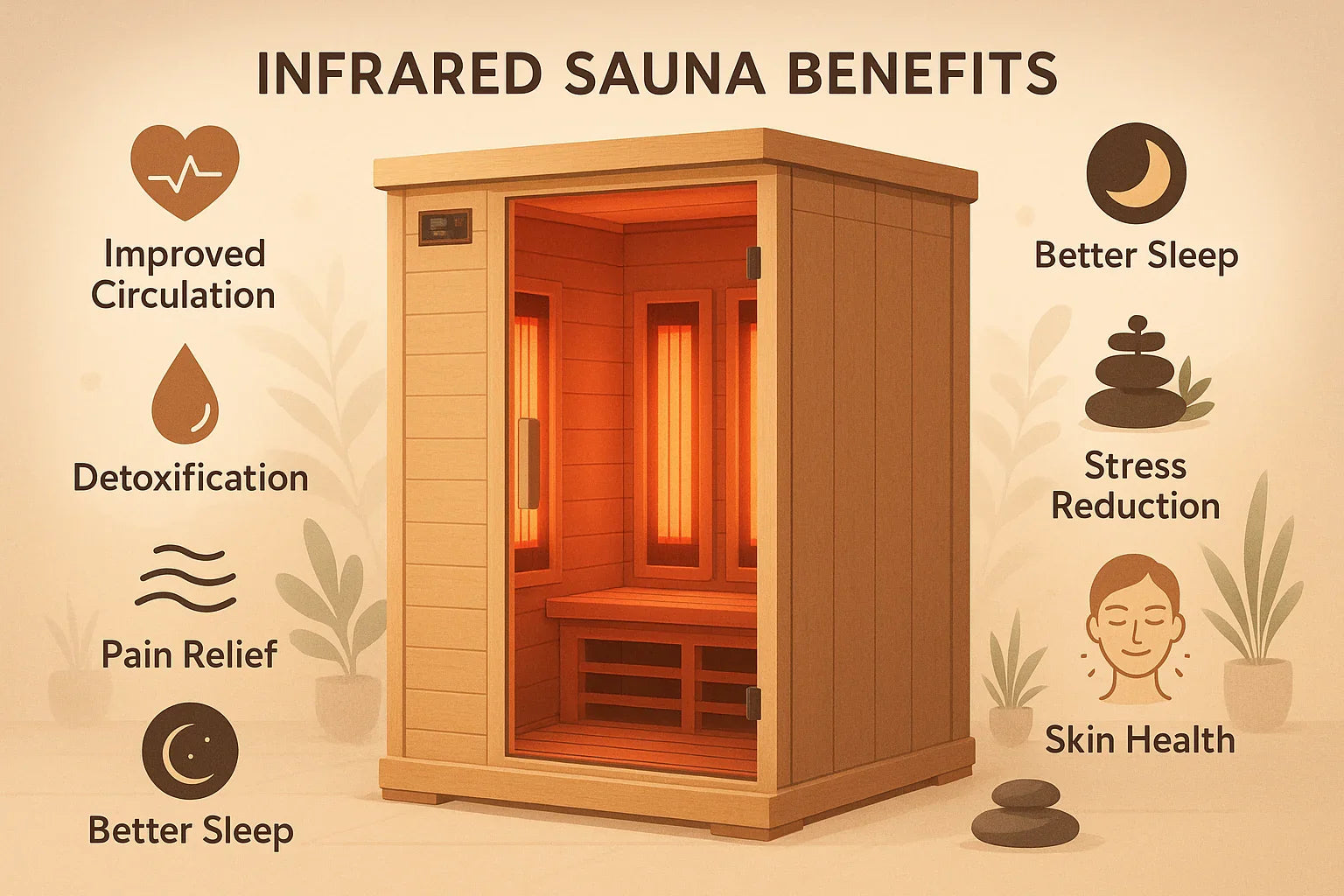
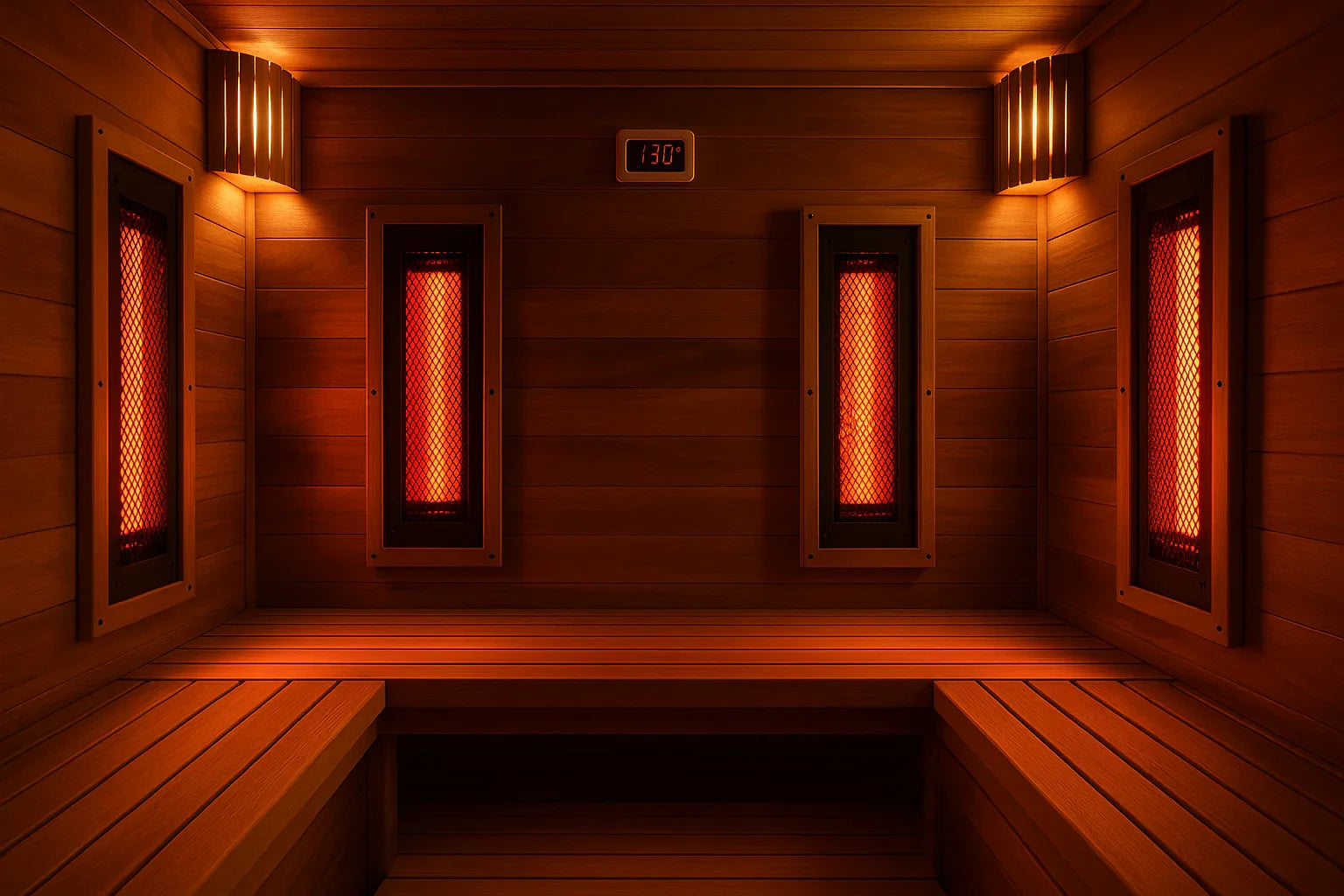

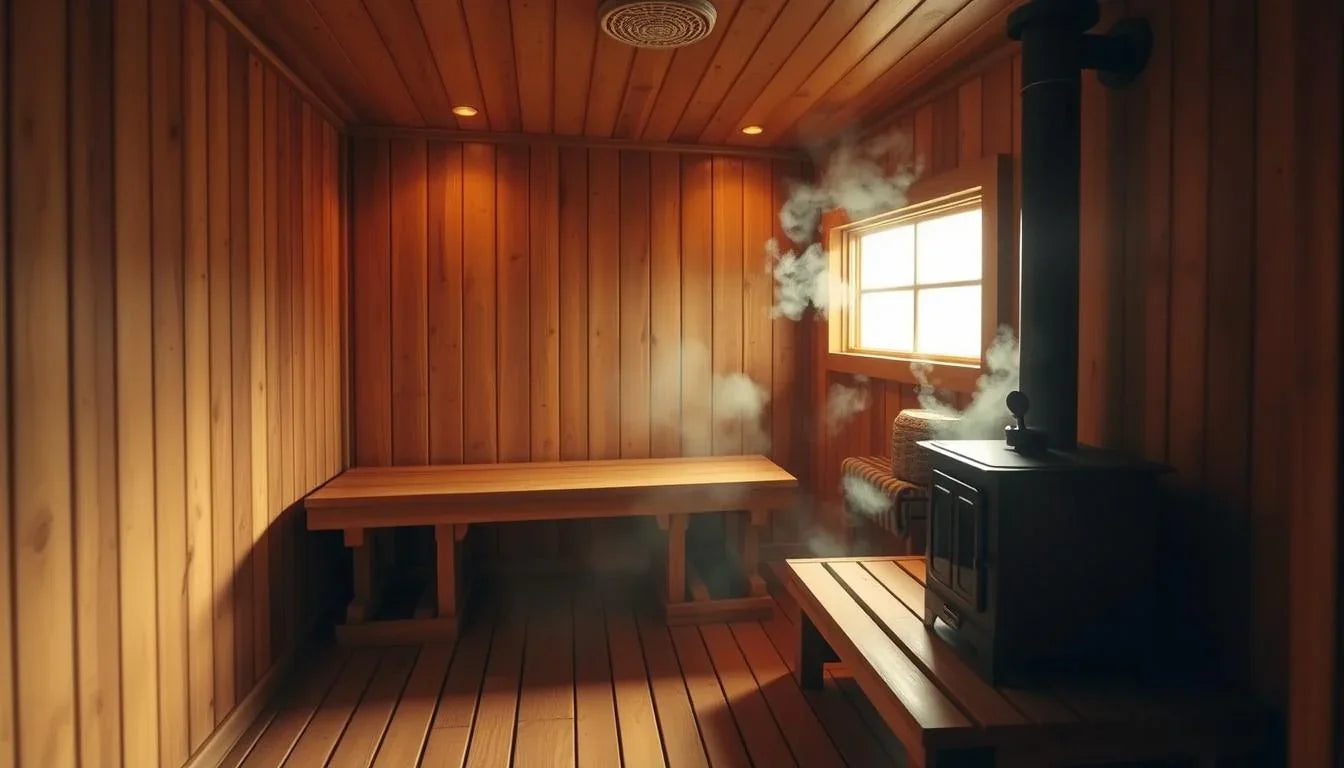

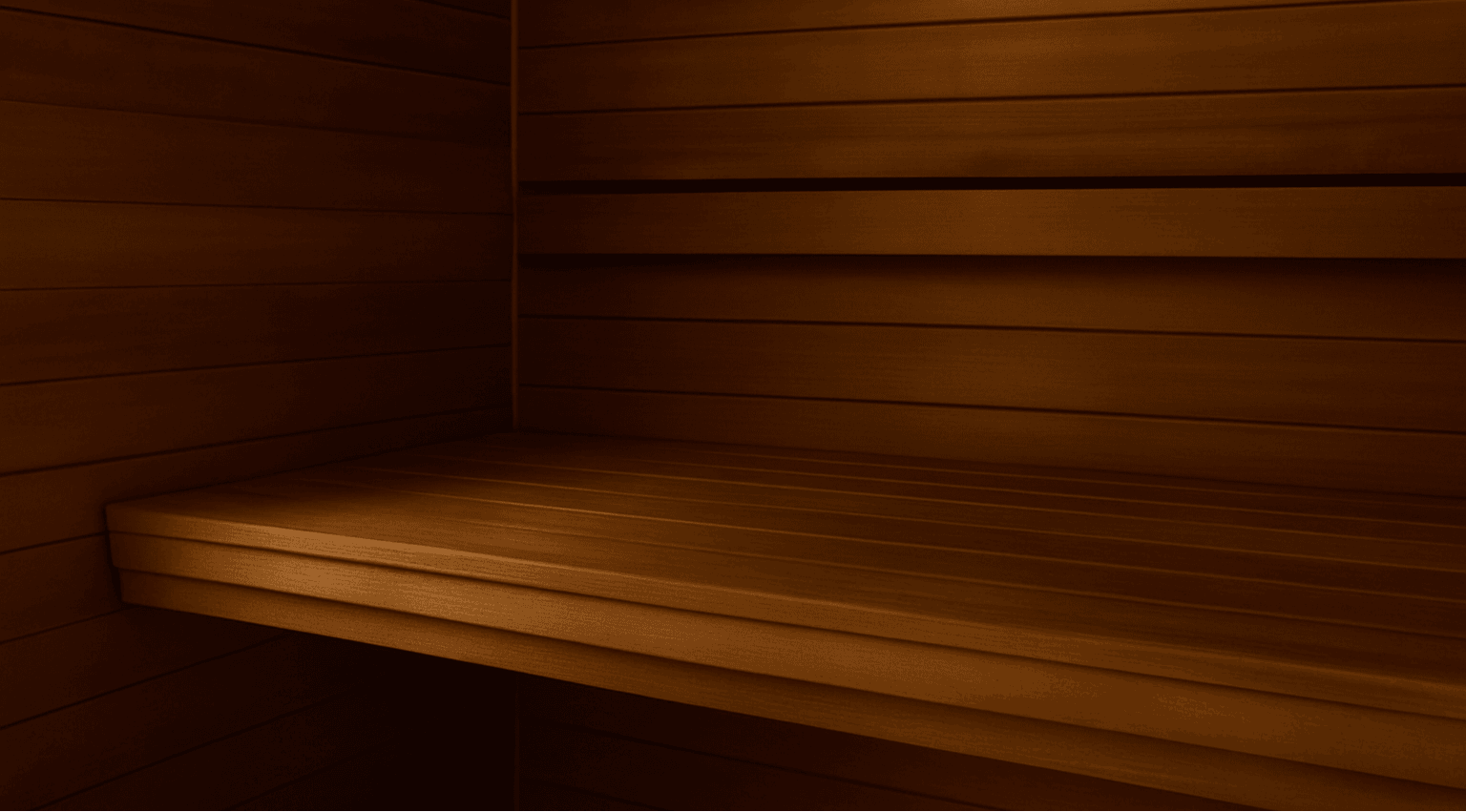
Leave a comment
This site is protected by hCaptcha and the hCaptcha Privacy Policy and Terms of Service apply.